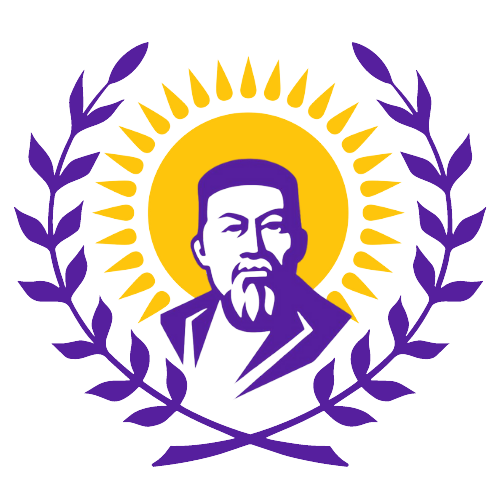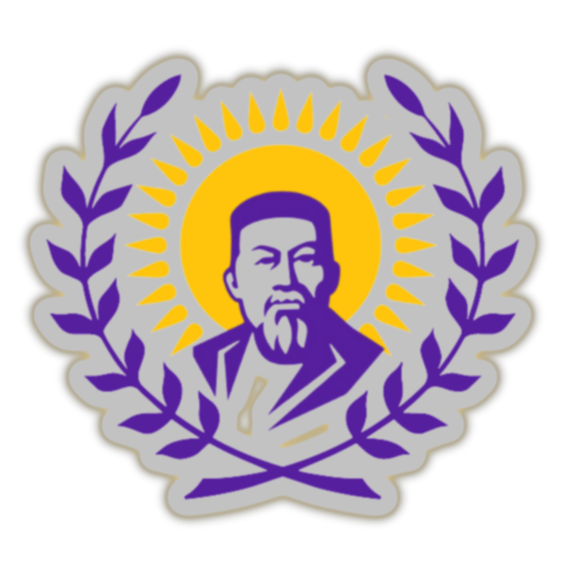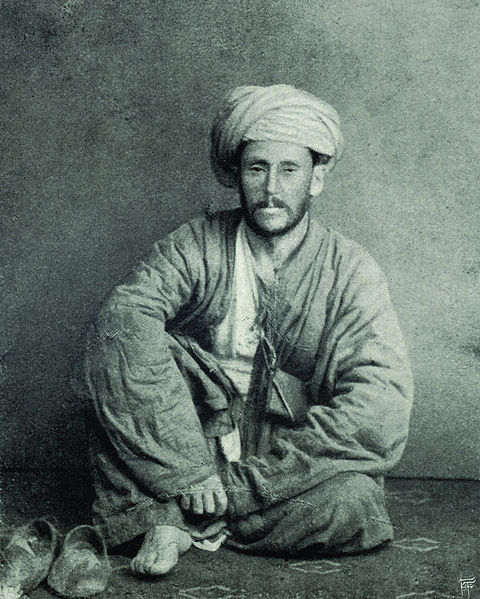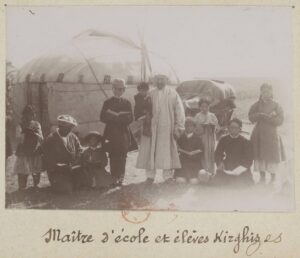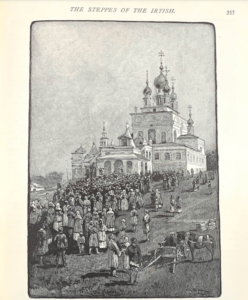
Born as Hermann Wamberger on March 19, 1832 in Szent-György, Arminius Vámbéry emerged as a significant voice not only in Hungarian academic debate on the origins of the ancient Magyars, but also in Great Britain, the Ottoman Empire and Central Asia1.
Vámbéry was 1 year old when his father passed away and their family moved to Dunaszerdahely. He attended a local school until the age of 12 and showed a remarkable aptitude for learning languages. By the age of sixteen, he had a good knowledge of Hungarian, Hebrew, Latin, French, and German. He was also rapidly acquiring English, the Scandinavian languages, Russian, Serbian, and naturally other Slavic languages.
In 1846, he went to Pressburg, where he remained the three years. Later he studied at Vienna, Kecskemét, and Budapest. Vámbéry was especially attracted by the literature and culture of the Ottoman Empire, including Turkey. By the age of twenty, Vámbéry went to Istanbul and established himself as a private tutor of European languages. Around this time, he was elected a corresponding member of the Hungarian Academy of Sciences in recognition of his translations of Ottoman historians.
After spending about a year in Constantinople, he published a German-Turkish dictionary in 1858. Later, he also published various other linguistic works.

Vambery in dervish dress.
Public domain, courtesy of Wikimedia Commons
Returning to Budapest in 1861, he received a stipend of a thousand florins from the academy, and in the autumn of the same year, disguised as a Sunni dervish, and under the name of Reshit Efendi, he set out from Constantinople. His route lay from Trebizond on the Black Sea to Tehran in Persia, where he joined a band of pilgrims returning from Mecca. He spent several months traveling with them across Central Iran. He then went to Shiraz, through Ispahan, and in June, 1863, through Central Asia.
Throughout this time, he succeeded in maintaining his disguise as “Reshit Efendi”. This was the first successful journey of its kind undertaken by a European; and since it was necessary to avoid suspicion, Vámbéry could not take even fragmentary notes, unless by stealth.
After a long and perilous journey he arrived back at Pest in May 1864. He went to London to arrange the English language publication of his book about the travels. “Travels in Central Asia” and its Hungarian counterpart “Közép-ázsiai utazás” were published in 1865.

Thanks to his travels, Vámbéry became an internationally renowned celebrity writer. He became acquainted with members of British elite and diplomatic corps. The Ambassador of Austria to the Court of St. James gave him a letter of recommendation to the Emperor, who received him in an audience and contributed to Vámbéry’s international success by granting him professorship in the Royal University of Pest.
The writings of Vámbéry present an outstanding academic value in the English speaking world, primarily as we speak of his contribution to the study of the Central Asian region that are one of the most referred to works for those who conduct an extensive research on this subject.
The chronicles of the Hungarian royal court in the Middle Ages have a wealth of information on the Hungarian ancestral homeland and the origin of the Hungarian language. Many of these accounts stipulate that the Hungarians originate from the Western part of Scythia which coincides with the area of Central Asia and present day Kazakhstan.
Perhaps his interest in this theory inspired Vámbéry’s travels to the region and his unique studies based on personal experiences and observations.
Even after his journey, Vámbéry reminisces with great nostalgia, “while I was writing my memoirs, during the first three months of my stay in London, after my year long wanderings in Asia, I had very great trouble in accustoming myself to the idea of being firmly settled down”2.
Describing the literature in Central Asia, Vámbéry famously says that “the dwellers in a Kazakh tent are more disposed to poetry than members of a polished society in Paris and London, must surprise no one”3.
The dwellers in a Kazakh tent are more disposed to poetry than members of a polished society in Paris and London, must surprise no one.

Among us, Vámbéry continues, (it is only over a certain age that poetry indicates herself more or less), there are only certain individuals that linger round the Castilian fountains. In Central Asia, those bowed down by age, as well as youthful lovers, passionately affect poetry, the warrior equally with the shepherd, the priest as well as layman – each one attempts the composition of poetry or devises tales; and if this attempt is probably not successful in every instance, still, nevertheless, the habit of even listening to the compositions of others may be said to be universal.
Speaking of Kazakh literature, Vámbéry retells the Tale of Kugaul about one Kazakh named Buruzgay4.
To date, one of the most valuable accounts that he provides are manners and race characteristics of Kazakh people that very few Western travelers of that time were able to put in place together with such a great detail and admiration.
“The women and youths, in general, he writes, have a white and almost European complexion; still this becomes soon altered, through the manner of living in the open air, in heat and cold. The Kazakhs, he continues, are of thick set and powerful frames, with large bones, they have mostly short necks, – a real type of the Turanian”5.
In their dress, Vámbéry explains, Kazakhs can be distinguished from the rest of the nomadic tribes and settlers: in Central Asia, mostly by their head – gear. The men wear, in summer, a felt hat (kalpak); in winter, a cap (tumak), with fur covered with cloth; the back-flaps of which protect the neck and ears. Besides these, they have still a little fur cap (koreysh), which, however, is employed more for in-door use. The women wear a sheokele, which is distinguished in that that is more conical and allows the veil to fall not before, but down the back to the loins.
The hair, Vámbéry points out, is dressed in different fashion. The Kazakh women, he says, plait the hair in eight thin plaits, four on either side. They cover their heads with a letshek, in cloth, which covers head and neck6.

The religion, as he explains, is almost universally the Mohameddan; still, in a very lax condition, which is the case with nearly all nomadic tribes in connexion with Islam.7 Before and after the Arabians came to Central Asia, Vámbéry says, the Kazakhs professed Shamanism, and it is not to be wondered at, considering the little influence which the teachers of Mohammed could maintain there, that much of the early faith remains there now, and out of a whole tribe, which consists of many hundred tents, there are often one or two persons among the chiefs who can read the Koran a little. Vámbéry notes that they call themselves Mohammedans, but prayers, fasts and other religious acts could rarely be observed by them. Whilst describing this, Vámbéry also describes various superstitions of the people he meets. He says in particular that “each individual part of the tent, each utensil, has some superstition in connexion with it, which is strictly observed in pitching a tent, in milking, cooking, spinning and weaving far more than the laws of Islam, which are never particularly taken to heart”8.
But the most intriguing divination he notes is from fresh spun thread. Four stones are laid down, two white and two black; (in the midst is a thread, strong twisted), and the other end suddenly set free. If the thread in its fall sinks down to the black stones, it signifies misfortune; to the white, the contrary. From the hand of the twister no action is descried, for the oracle must be infallible. This is called Tyik Yip and is to be found everywhere in Central Asia.
Of food which is peculiar to the Kazakh he names Suru, which consists of smoke dried flesh (horse or sheep’s flesh) cut into small pieces, roasted in fat. The preference for this arises from (its capacity to be kept for weeks without going spoilt). Kodje, ordinary wheat, is cooked in water and eaten in sour milk.
Memoirs of Vámbéry so beautifully put together in “Travels in Central Asia” would be another remarkable journey to 1831 Kazakh steppes that we recommend our readers to embark on. From personal characteristics and traits to lifestyle and cuisine, from poetry to literature, to religion and faith – this book provides an informative, engaging and detailed account that can rarely be found.
